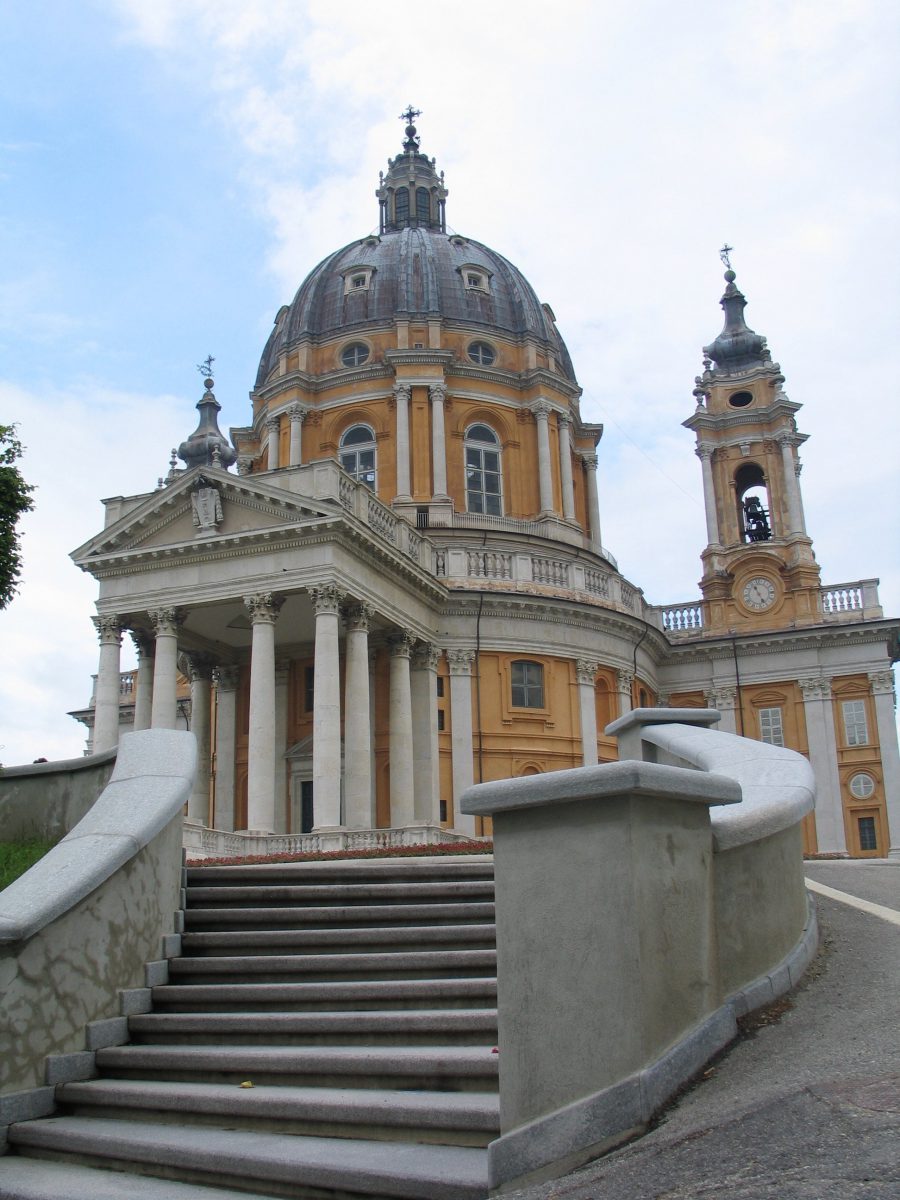
Among the wonders that the city of Turin offers us, we cannot fail to mention the Baroque masterpiece of architect Filippo Juvarra: the Basilica of Superga. The Basilica stands atop the 672-meter-high Turin hill of the same name. Given its history and background, it is considered one of the favorite scenic destinations in and around Turin.
The Basilica of Superga is a temple dedicated to Our Lady by architect Filippo Juvarra, commissioned by then Duke Victor Amadeus II. The story takes us to September 2, 1706, when the armies of France’s King Louis XIV had been besieging Piedmont and Turin for four months to reduce it to a French province.
Duke Victor Amadeus II and his cousin, Prince Eugene of Savoy, climbed the hill of Superga to check the enemy’s advance and noted that channeling attacks there was the only way to triumph against the French and their many troops.
There at the top was a small parish church, in front of the statue of Our Lady of Grace the two made a vow. If that strategy would have led to victory for the Turinese, Victor Amadeus II would have had a temple dedicated to Her erected in that wonderful place.
The clash on September 7 of the same year was terrible, but the Savoy army succeeded and Piedmont won its independence. After ten years had passed, Duke Victor Amadeus II commissioned architect Filippo Juvarra of Messina to build the Basilica. The top of the hill was lowered about forty meters to allow for the work, and on November 10, 1731, after fourteen years since its construction began, the Basilica of Superga was finally inaugurated.
To this day it remains one of the long favorites of Torinese and non-Torinese alike, where one can enjoy a splendid panoramic view of Turin and the Alps, as well as magnificent Baroque architecture.

131 steps separate you from one of the most fascinating activities you can do at Superga: climb to the dome balcony where you can enjoy a breathtaking view of Turin and the Alps.
On days when you can enjoy clear skies, you can see Monviso, Gran Paradiso, and also Rivoli Castle, which is located as the crow flies opposite Superga.
It is undoubtedly a beautiful view that does not lose its charm in the evening, in fact it becomes even more striking. Unfortunately, during evening hours it is not possible to go up to the Dome, however, the spectacle posed from the Hill is 110 and praise. On the other hand, if anyone asks why Turin is nicknamed “magic city,” the answer can be found above that magic hill.
Since its design, Victor Amadeus II had envisioned a space dedicated to the burial of members of the House of Savoy. To give light to the project, however, we have to wait until 1774; in fact, Victor Amadeus III commissioned architect Francesco Martines (great-grandson of Juvarra) to transform the basement of the Balisca into a mausoleum. The crypt, completed completely in 1796, can be visited and is located passing through the left side of the Basilica and can be visited, the plan is in the shape of an elongated Latin cross and houses 62 burials. At the ends of the two arms are two chapels:
In the center of the Crypt is the sarcophagus of King Charles Albert Savoy-Carignano: on the sides are four small putti representing immortality, time, death, and piety.
Just before entering the interior of the Royal Crypt, one can admire a marble statue as a symbol of defense of the Savoy statues: the sculpture depicts St. Michael the Archangel defeating the devil (the work of Carlo Finelli from Avenza di Carrara).
PHOTOS
The Superga massacre is dated May 4, 1949. The Granata, in those years nicknamed “the invincibles,” were returning from a friendly match played in Lisbon. To date, 72 years have passed since the memorial was celebrated.
Torino was nicknamed so not by chance; that team was considered one of the strongest in the world, if not the strongest, having won 5 consecutive championships in 7 years (the 43-44 and 44-45 seasons were interrupted because of the War).
That morning the sky over Turin was covered in fog, and the plane carrying the Grande Torino crashed into the rear wall of the Basilica of Superga, killing all 31 passengers. Of those 31, 18 were soccer players almost all members of the Italian national soccer team; the staff consisting of coaches, masseurs and managers; the crew; and three of the best Italian sports journalists of those years.
For all sports and nonsports lovers, behind the Basilica of Superga is the Grande Torino monument, commemorating one of the saddest stories of sports.

The Basilica of Superga is a place full of charm: between architectural styles, history and sports, it is one of the must-do tourist destinations in the city of Turin. There are several ways to climb the hill: on foot, by the historic tramway, by bicycle (for the fearless), following hiking trails; but why not experience the thrill with a nice Vespa?
Discovering Lake Maggiore and Lake Orta: the Vespa experience
Unique gift ideas: the premium experiences of Tour in Vespa
Discover Piedmont’s Christmas menu: traditional dishes
5 good reasons to gift a Vespa Tour
What are the typical wines of the Langhe?
What is the best period to visit the Langhe?
Vespa Tours
The Italian Experience snc of Luca Paolo Celotto and Diego Remondino
P.IVA 12327230012 – REA: CN – 322676
Tua Assicurazioni liability policy N°40324512001433
Fund Policy N°40324512000456 dated 05/04/2024
Scia Prot.no. 0000752 dated 24/02/2021 issued by the Province of Cuneo